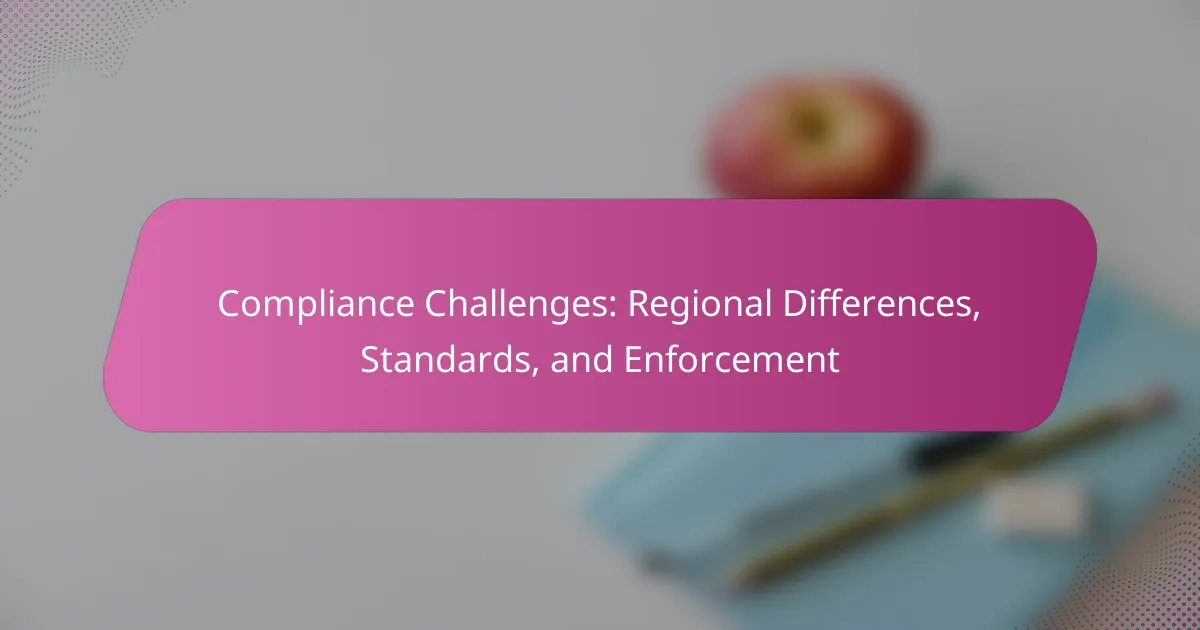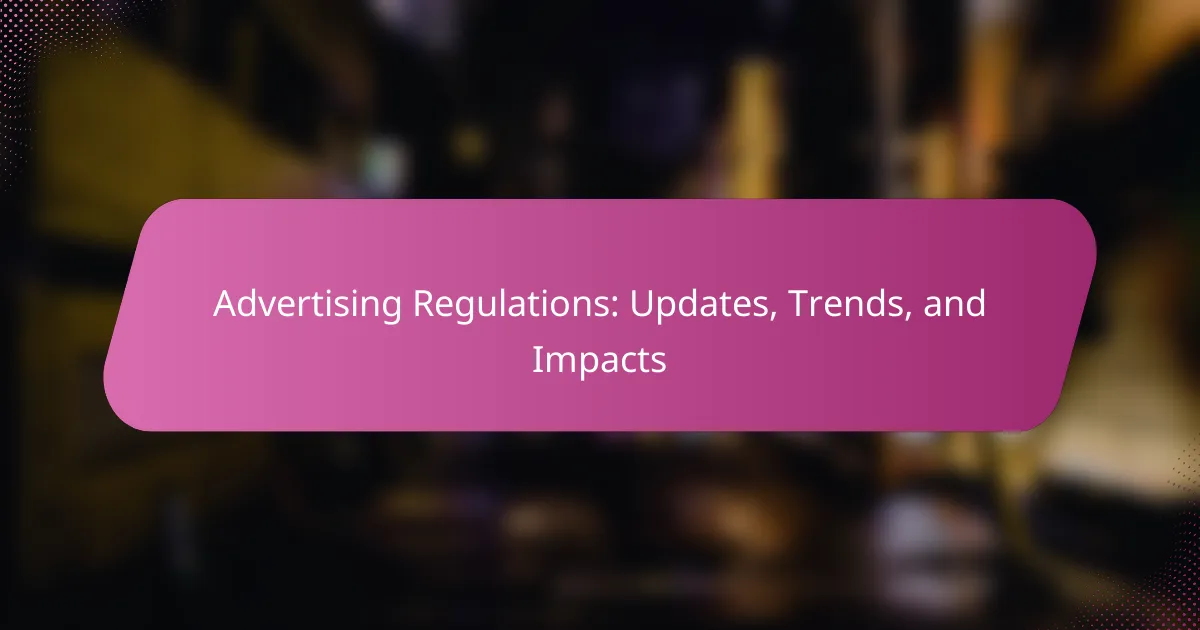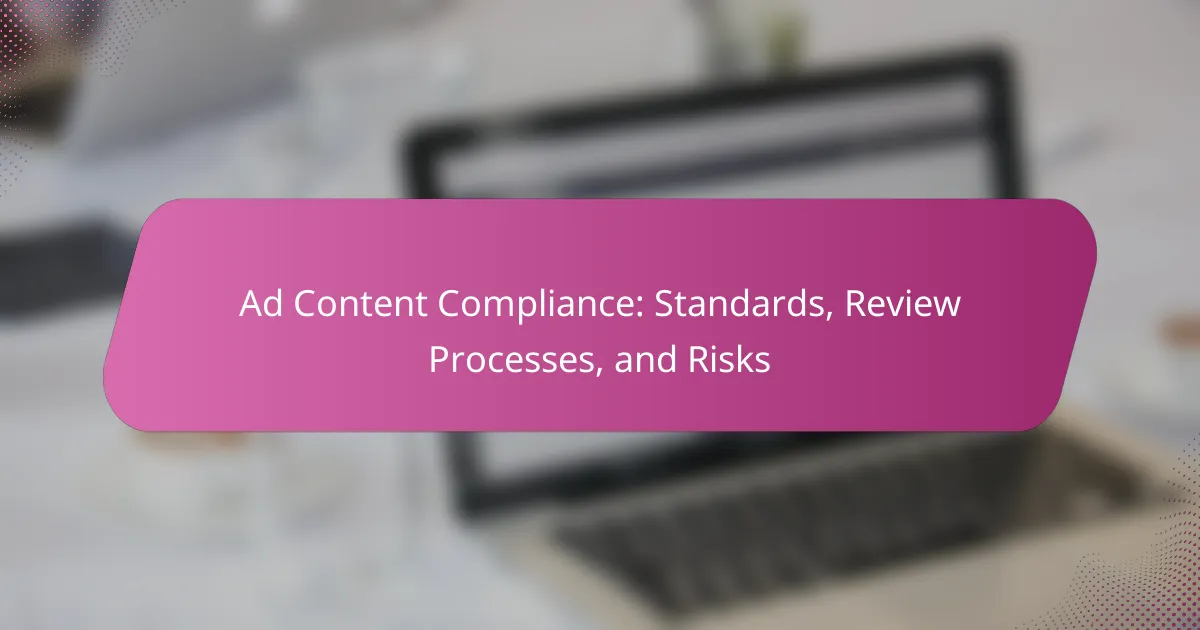Compliance challenges are increasingly complex due to regional differences in regulations, standards, and enforcement practices. In North America, businesses face a patchwork of state laws that complicate compliance efforts, while in Europe, local regulations and cultural norms create a diverse compliance landscape. Similarly, in Asia, varying international standards and local regulations reflect distinct regional priorities, making it essential for businesses to navigate these complexities to ensure legal adherence and avoid penalties.
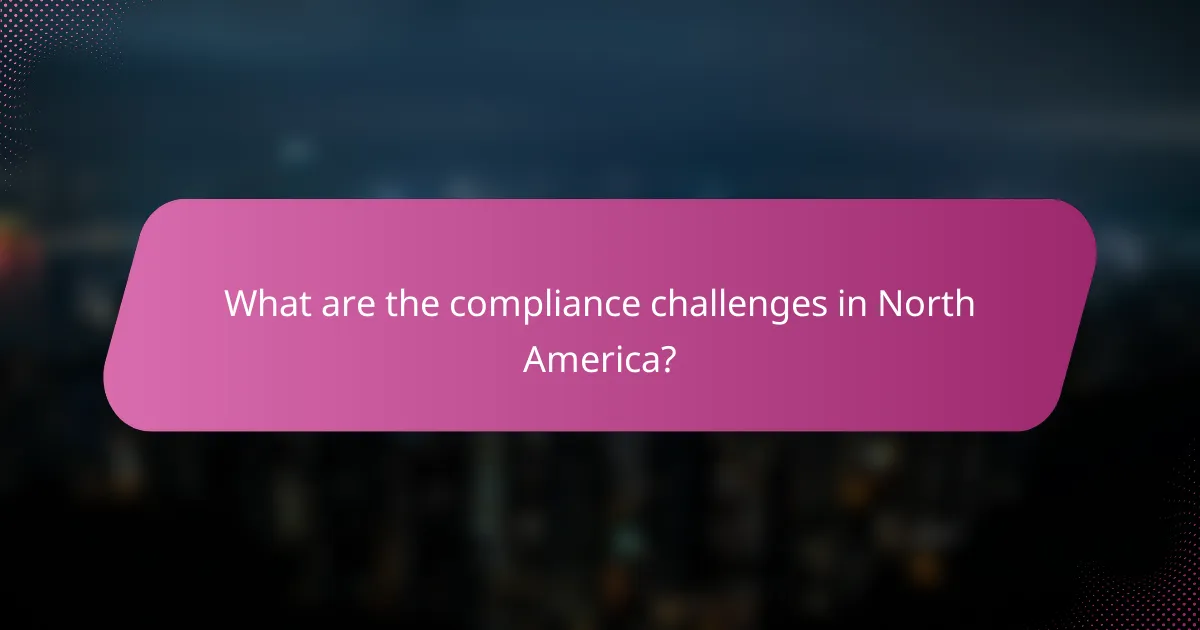
What are the compliance challenges in North America?
Compliance challenges in North America stem from a mix of regulatory complexity, varying state laws, and enforcement inconsistencies. Businesses must navigate a landscape where regulations can differ significantly across jurisdictions, complicating compliance efforts.
Regulatory complexity
The regulatory environment in North America is characterized by a multitude of federal, state, and local laws that can overlap and conflict. Companies must stay informed about regulations from agencies such as the Environmental Protection Agency (EPA) and the Securities and Exchange Commission (SEC), which can impose stringent requirements. This complexity can lead to increased compliance costs and necessitate dedicated resources for monitoring and adherence.
To manage regulatory complexity, businesses should implement robust compliance management systems that track changes in legislation and ensure that all levels of the organization are informed. Regular training sessions can help employees understand their responsibilities and the implications of non-compliance.
Varying state laws
In North America, particularly in the United States, state laws can vary widely, creating additional compliance hurdles. For example, labor laws, environmental regulations, and tax codes can differ significantly from one state to another. This variation means that a compliance strategy effective in one state may not be applicable in another, requiring tailored approaches.
Organizations should conduct thorough research to understand the specific laws in each state where they operate. Collaborating with local legal experts can provide insights into the nuances of state regulations and help avoid costly penalties.
Enforcement inconsistencies
Enforcement of compliance regulations can differ not only between states but also within them, leading to unpredictability for businesses. Some jurisdictions may have aggressive enforcement practices, while others may take a more lenient approach. This inconsistency can create challenges in ensuring compliance across all operational areas.
To mitigate risks associated with enforcement inconsistencies, companies should maintain comprehensive records of compliance efforts and be prepared for audits or inspections. Establishing a proactive relationship with regulatory bodies can also help businesses stay informed about enforcement trends and expectations.
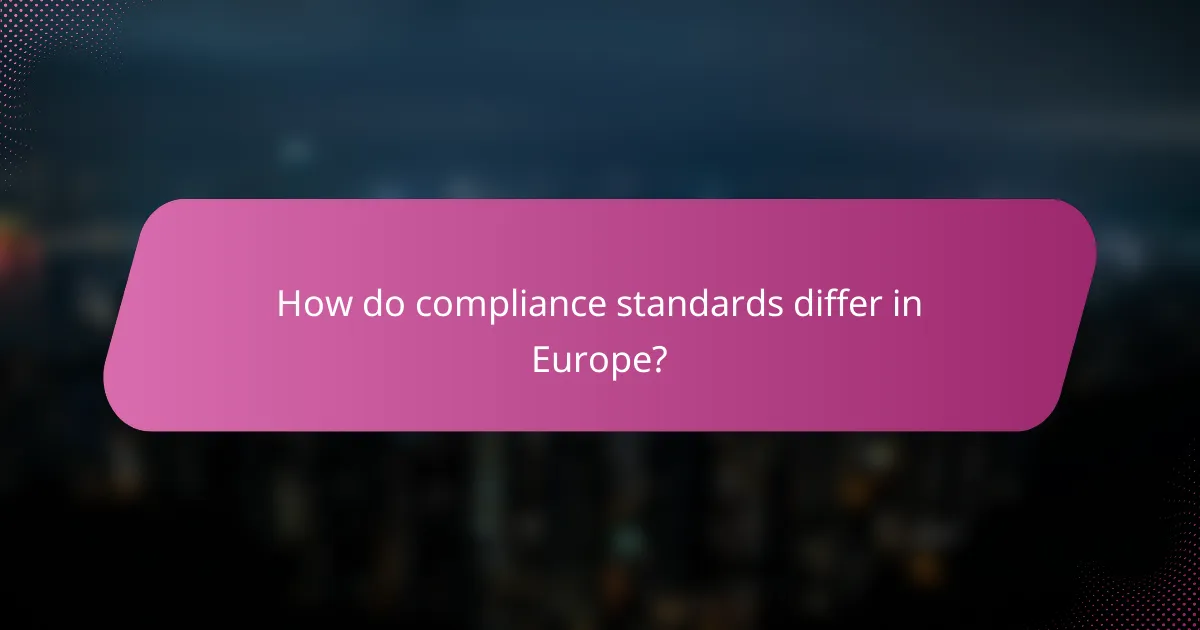
How do compliance standards differ in Europe?
Compliance standards in Europe vary significantly across countries, influenced by local regulations, cultural norms, and enforcement practices. Understanding these differences is crucial for businesses operating within the region to ensure adherence to legal requirements and avoid penalties.
GDPR implications
The General Data Protection Regulation (GDPR) sets a high standard for data protection and privacy across Europe. It mandates strict guidelines on how personal data should be collected, processed, and stored, with significant penalties for non-compliance, often reaching up to 4% of annual global turnover.
Businesses must implement clear consent mechanisms, ensure data portability, and provide users with the right to access and delete their data. Failure to comply can lead to substantial fines and damage to reputation, making it essential for organizations to prioritize GDPR adherence.
Regional variations in enforcement
Enforcement of compliance standards in Europe can vary widely by country. While some nations, like Germany and France, have robust regulatory frameworks and active enforcement agencies, others may have less stringent oversight, leading to inconsistencies in compliance practices.
For instance, businesses in countries with strong enforcement may face regular audits and stricter penalties, while those in regions with weaker enforcement might experience more lenient scrutiny. Companies should assess the local regulatory landscape and adapt their compliance strategies accordingly to mitigate risks.
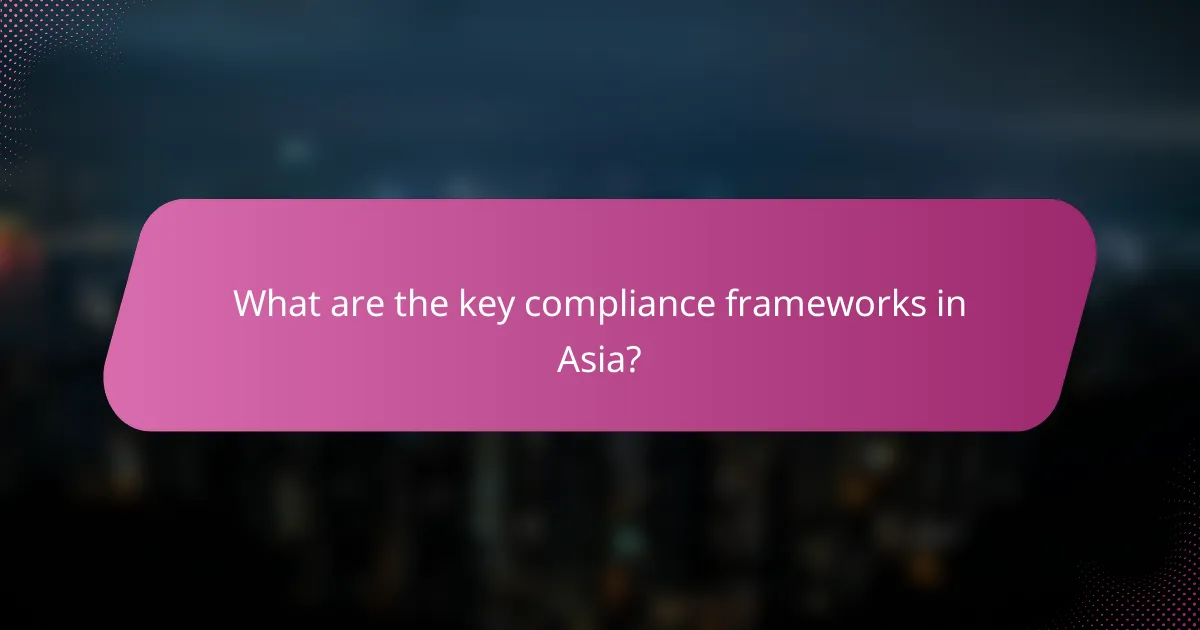
What are the key compliance frameworks in Asia?
Key compliance frameworks in Asia include various international standards and local regulations that guide businesses in maintaining legal and ethical operations. These frameworks vary significantly across countries, reflecting regional priorities and enforcement mechanisms.
ISO standards
ISO standards are internationally recognized guidelines that help organizations ensure quality, safety, and efficiency. In Asia, many countries adopt ISO standards such as ISO 9001 for quality management and ISO 27001 for information security management.
Compliance with ISO standards can enhance a company’s credibility and operational efficiency. Organizations often pursue certification to demonstrate adherence, which may involve regular audits and continuous improvement processes.
Local regulations
Local regulations in Asia can differ widely, influenced by each country’s legal framework and economic environment. For instance, data protection laws like the Personal Data Protection Act in Singapore and the General Data Protection Regulation in the EU have counterparts in various Asian jurisdictions, each with unique requirements.
Businesses must stay informed about local compliance obligations, which may include labor laws, environmental regulations, and industry-specific standards. Failure to comply can result in significant penalties, making it essential to conduct regular compliance audits and training for employees.
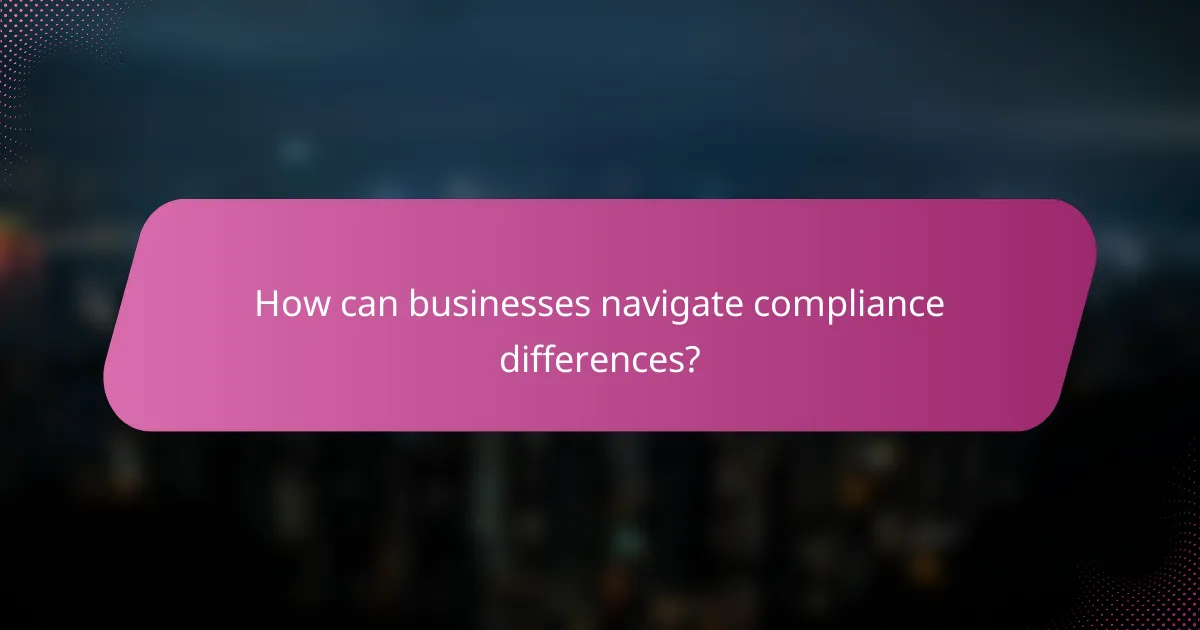
How can businesses navigate compliance differences?
Businesses can navigate compliance differences by understanding regional regulations and adapting their practices accordingly. This involves staying informed about local laws, engaging with experts, and utilizing technology to streamline compliance processes.
Consulting with legal experts
Engaging legal experts is crucial for businesses facing compliance challenges. These professionals can provide insights into local regulations, help interpret complex laws, and ensure that the business’s practices align with legal requirements.
When selecting legal counsel, consider their experience with specific regulations relevant to your industry and region. Regular consultations can help identify potential compliance risks before they become issues.
Implementing compliance software
Compliance software can significantly simplify the management of regulatory requirements. These tools often include features for tracking changes in laws, automating reporting processes, and maintaining documentation, which can save time and reduce errors.
When choosing compliance software, look for solutions that offer customization to fit your specific needs and integrate well with existing systems. Regular updates and user training are also essential to maximize the effectiveness of the software.
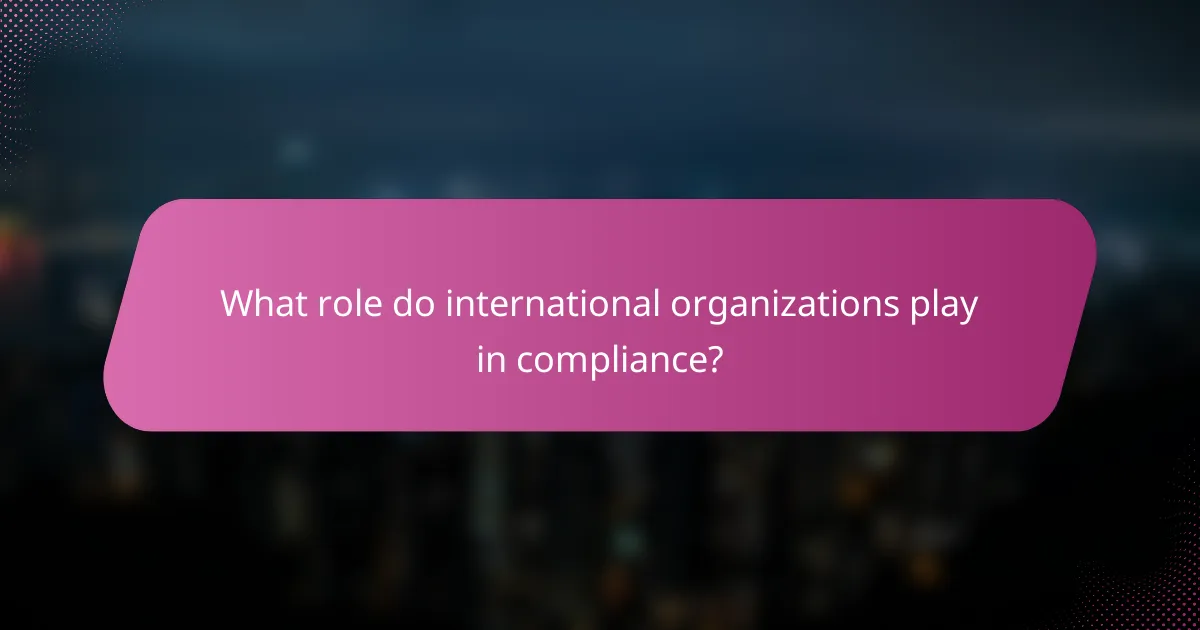
What role do international organizations play in compliance?
International organizations play a crucial role in compliance by establishing frameworks and guidelines that help nations align their regulations with global standards. These organizations facilitate cooperation among countries, ensuring that compliance measures are effective and harmonized across borders.
Setting global standards
International organizations, such as the International Organization for Standardization (ISO) and the World Trade Organization (WTO), create standards that serve as benchmarks for compliance. These standards cover various sectors, including finance, health, and environmental protection, providing a common language for countries to follow.
For example, ISO 9001 outlines quality management principles that organizations can adopt to enhance customer satisfaction. By adhering to such standards, businesses can improve their operational efficiency and gain a competitive edge in the global market.
Facilitating cross-border compliance
International organizations help streamline cross-border compliance by promoting agreements that simplify regulatory requirements. These agreements can reduce the administrative burden on companies operating in multiple jurisdictions, allowing for smoother trade and investment flows.
For instance, the European Union has established regulations that member states must follow, which helps create a unified market. Companies can benefit from this by reducing the complexity of navigating different national regulations, thus minimizing compliance costs and risks.
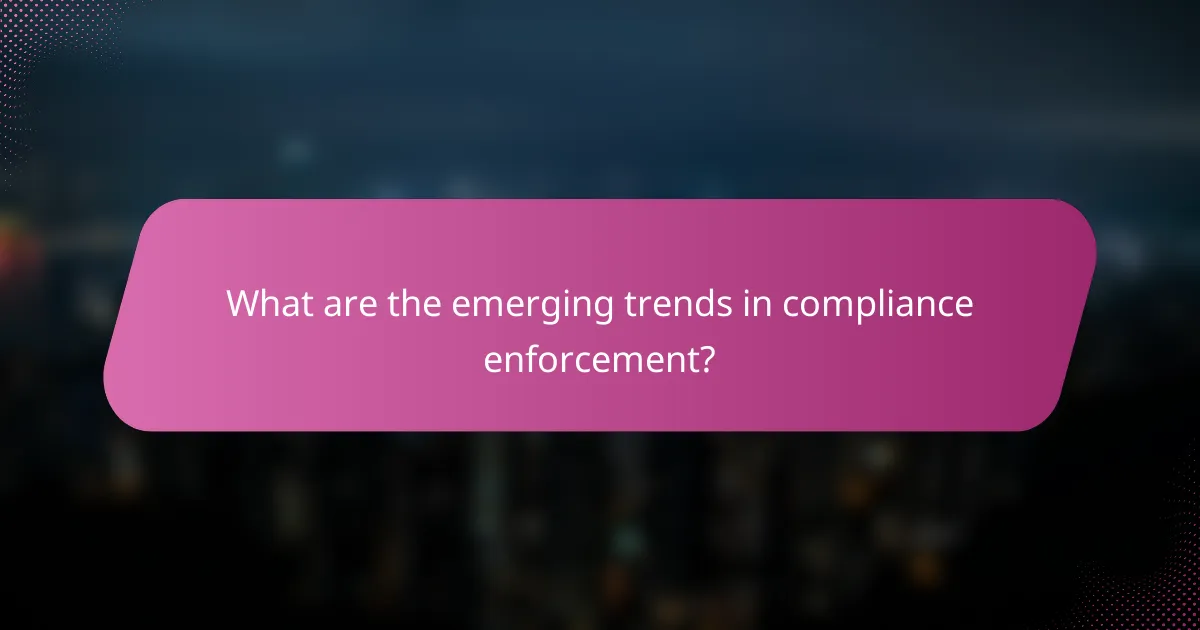
What are the emerging trends in compliance enforcement?
Emerging trends in compliance enforcement focus on leveraging technology and addressing environmental concerns. Organizations are increasingly adopting digital tools for monitoring compliance and are prioritizing sustainability regulations to meet evolving standards.
Increased digital monitoring
Digital monitoring has become a cornerstone of compliance enforcement, utilizing advanced technologies such as artificial intelligence and big data analytics. These tools enable organizations to track compliance in real-time, ensuring adherence to regulations and identifying potential violations before they escalate.
For example, companies may implement software that automatically flags discrepancies in financial reporting or environmental impact assessments. This proactive approach can significantly reduce the risk of penalties and enhance overall compliance efficiency.
Focus on sustainability regulations
There is a growing emphasis on sustainability regulations as governments and organizations recognize the importance of environmental stewardship. Compliance with these regulations often involves reporting on carbon emissions, waste management, and resource usage, requiring companies to adopt more transparent practices.
Organizations should stay informed about local sustainability standards, which can vary widely by region. For instance, the European Union has stringent regulations regarding emissions, while other regions may have less rigorous requirements. Companies should regularly review their practices to ensure alignment with these evolving regulations.
